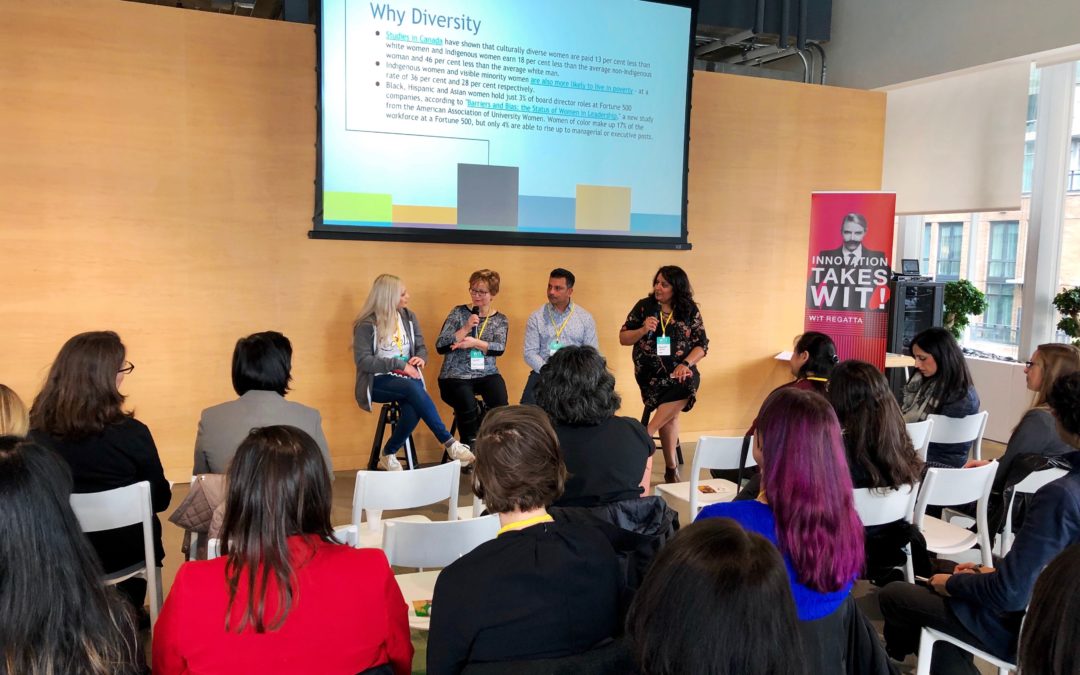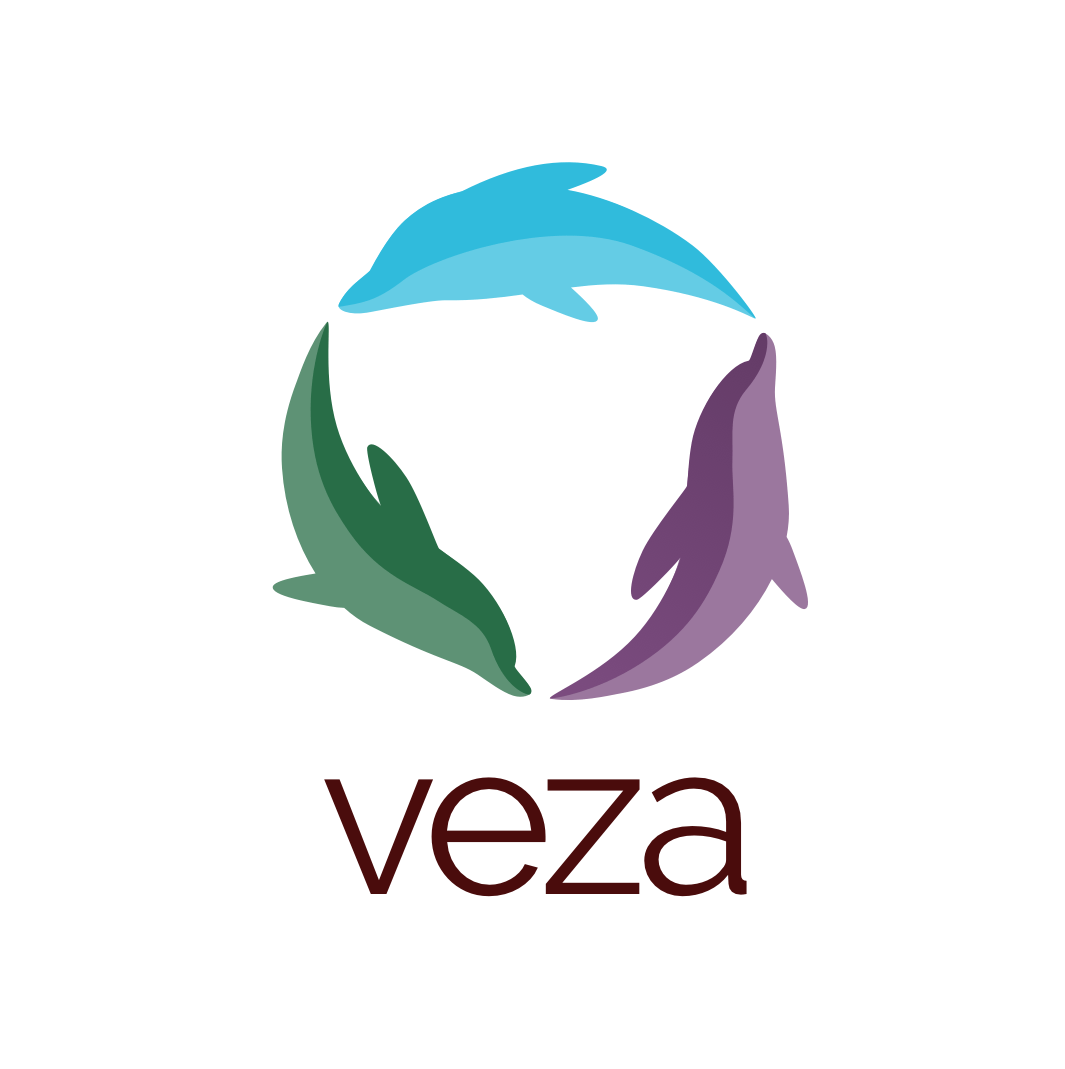
by Staff | Jun 20, 2019 | Business, Diversity, Management
A diverse workforce produces better services, higher quality product, and higher profit margins. You, as the leader of your organization, need to manage your diverse workforce to achieve your organizational goals efficiently. To begin with, you’ll need to come up with certain guidelines for your employees to work as a team and train them to coordinate well with each other. However, it’s an ongoing process. If you don’t handle your diverse workforce well and ensure those guidelines are followed, your employee turnover is likely to be higher.
Overall, people stay in organizations that invest in them and provide a safe, inclusive working environment – that means allowing people to show up as their whole selves and not have to hide aspects of their experience or identities in the office. Inclusiveness is easy and happens naturally when you work with a group of similar people, but it becomes more difficult when people come from different backgrounds, gender identities and diverse abilities. Only when the variety of experiences come together to form one team over the long-term do you really get to reap the benefits and improved performance that a diverse team can achieve for your organization. But what management strategies can you use to improve retention of a diverse team?
1. Take Feedback from Time to Time
Feedback works both ways. By creating an environment of trust and openness, your employees can address their concerns with you directly, which gives you the chance to make necessary changes in your organization before they become a liability. Some cultures that are more hierarchical discourage direct employee to supervisor feedback, so you may have to take initiative in sourcing feedback from your staff. Ask your team how they are performing and you’ll find which areas to work on. Encourage your team to give both constructive and positive feedback. Constant bi-directional feedback can help you improve delegation and the overall work environment.
2. Data-Driven Approach
Most organizations take retention actions based on emotional decisions, which is the reason these actions sometimes don’t deliver the desired results. A data-driven approach to optimizing the retention of a diverse workforce is necessary. Collection of data should include periodic surveys, issues faced by a diverse workforce, and their overall progress. Use the collected data for making decisions, alterations, and retention actions to achieve desired results for diversity retention and recruiting in the workplace.
3. Stay Interviews
Stay interviews are the number one tool for employee retention. They are easy to carry out and effective in reinforcing the reasons your retention target should stay. To carry out stay interviews as a part of your strategy requires scheduling a one-hour interview at least twice a year with staff.
The meetings allow the manager and their employees to talk about their progress, expectations, and the reasons why the employee adds value to the organization. Having stay interviews also allows you to understand why your employees work for you and what your organization can do better to keep them over the long-term – when done widely across a workplace, you can spot patterns in the feedback you receive. They are a proven type of employer investment in your employees as taking the time out of your schedule to hear about their experience and improves employee satisfaction.
4. Performance Measurement and Rewards for Retaining Employees
It’s a well-established rule that you can execute what you measure and further, that you can improve efficiency by rewarding employees. To make your executives and managers prioritize retaining key employees, set rewards for retention. Retention of employees can be added as a KPI for their promotion and bonus metrics.
The measure and reward technique worked quite well for high profile firms, like Intel. By running a company-wide bonus program for diversity retention, Intel managed to bring their diversity turnover below the industry average.
The Bottom Line is…
Having a diverse workforce is not effective for an organization if diversity retention falls short. The steps above create a foundation for strong communication, trust and investment in your employees, which should get you well on your way to improving retention of diverse employees.
Did you know that each hire costs on average $4,000*? That’s only one reason why hiring and retaining good people is so important. If you’re interested in addressing your hiring and retention of diverse employees, we can help. Borrow expert, customizable solutions to apply to your workplace with Veza Global’s Diversity Assessment.
*Source: Society of Human Resources

by Manpreet Dhillon | May 10, 2019 | Business
There are bound to be workplace conflicts and people who annoy us beyond measure. The interesting thing is if you actually sat and reflected, you would realize the individuals who bother you the most are the ones who resemble the energy of someone from your past.
For instance, the lady who bosses everyone around and doesn’t let others have their way is the one who may reflect your mom or mother-in-law.
Conflict is created when there is an unsettling of values, beliefs, perceptions due to them being challenged by another person. The filters placed on the values, beliefs, and perceptions are based on our cultural and family upbringing.
A way to handle conflict is:
- Reflect on what really is the core issue and what is irritating you.
- Where do you need to take responsibility?
- What past experiences is this reminding you of?
- Who does this person remind you of and what unresolved situations do you have with that person?
- What would be the best outcome for the situation that is in the highest good for everyone?
- Then go talk to the person with a clear mind and clear intention. Stay in a place of love for yourself as that will allow you to be more compassionate and more focused on an outcome that supports both parties.

by Manpreet Dhillon | Mar 6, 2019 | Business, Diversity
We have all heard of the glass ceiling and we have seen its effects. Webster’s dictionary defines the glass ceiling as “an intangible barrier within a hierarchy that prevents women or minorities from obtaining upper-level positions.” Fortunately, we are now witness to how the glass ceiling is being broken and shattered as women are rising in numbers to new levels of leadership. We are seeing multiple women at the table for various roles for the first time ever.
Most recently, we can celebrate the number of women from minority backgrounds in the US Senate.The women of colour elected to the Senate were not only dealing with one glass ceiling, but two. Identifying as a woman and as a visible minority is a double whammy in many ways. They each had to overcome the mindset of having to push their way into spaces others have easier access to and on top of it all, they did so while visibly looking different than those who have been in power up until now.
They had to go above and beyond to break the perceptions of voters to show that they have the same qualifications and can make the same or better contributions than those typically being elected.
The Canadian Centre for Policy Alternatives recently published a report stating that women face a “double-pane glass ceiling” at the top of Canada’s corporate ladder — first, in getting to the executive suite and, once there, in earning as much as their male counterparts. Women earn about 68 cents for every dollar made by their male counterparts at the CEO or Executive level, whereas the gap has shrunk to 86 cents on the dollar at senior management.
As a minority and a woman, you experience the biases of the generalizations and stereotypes associated with race on top of those associated with gender. A recent report on Silicon Valley from the Ascend Foundation revealed that Asians, though the largest racial cohort in the industry, are the racial group least likely to be promoted to managerial and executive positions.
“The infantilization of Asian women, who report being treated as younger than they are, is yet another cultural barrier.” (For more on this, see: Huffington Post) “We’re seen as younger, more naive, less experienced, on top of less American,” says Lata Murti, an associate professor of sociology at Brandman University who researches the experiences of female Indian doctors.
In breaking the double glass ceiling, we must first tackle the societal biases and uncover the individual bias that may exist in the unconscious. It is through the tackling of these bias that we are able to accurately address the situation.
Here are few ways that you can begin to overcome cultural bias for yourself:
- Just do what you feel called to. It may be uncomfortable, you may feel lonely, you may be surrounded by people who don’t look like you or that you don’t resonate with. Regardless of these feelings, take the actions that you are called to. When we follow that call, we are listening to our intuition, soul and heart that are pulling us towards our purpose. It is important to listen and take the inspired action.
- Find a mentor that can show you a path that would otherwise feel overwhelming. Mentors give us advice based on their experience. Sometimes it works best to have multiple mentors who can speak from the varied angles of cultural experience, gender experience and the career experience.
- Connect with people who are likeminded, who will understand the fear and resistance, yet still push you through it. Surround yourself with people who understand the cultural experience, yet allow themselves to be pulled towards to their goals.
Another resource to overcoming the double glass ceiling is this talk by someone who did: Barinder Rasode in her TEDx talk: Smashing the Double Glass Ceiling
What have you done to smash the glass ceiling? Please share below.

by Staff | Feb 15, 2019 | Business, Diversity, Management
Diversity by Design: Co-Creating Inclusive Workplaces for Immigrants and Newcomers Recap
On January 28th, veza community hosted our second annual Diversity by Design workshop at Women in Tech Regatta. This year we were joined by Hanif Ladha from the Immigrant Employer’s Council of BC, Humaira Ahmed of Locelle Digital and Gwen Pawlikowski of Highlight Communication, who all provided incredible insights on the immigrant journey. The following blog will share some of the key highlights and takeaways from the panel and breakout groups.
Organizations can be designed to encourage diversity (and they should be!) A suite of studies have overwhelmingly proven that companies with more women in leadership and higher rates of ethnic diversity are more profitable, have higher retention rates of staff and are better at solving problems because of a diversity of thought around the table. For instance, according to Statistics Canada’s Workplace Employee Survey, for every 1% increase in gender diversity and ethnocultural diversity, there was, respectively, an average increase of 3.5% and 2.4% in revenue and 0.7% and 0.5% in workplace productivity.
We know that diversity is important secret sauce that makes organizations work better, but what is the secret to fostering more diversity? And further, what can we do to make sure that diversity is accompanied by belonging, especially for newcomers?
Onboarding
Onboarding is an important juncture for all employees that sets them up for success in their new roles. Poorly executed onboarding can create unnecessary stress, frustration and often, an end to employment. Newcomers need additional support to fit in and have an easy transition into a Canadian workplace.
Recommendations included:
- setting up their workspace with the tools they need and an onboarding guide ahead of time, perhaps even an acronym dictionary if the organization leans heavily on jargon;
- setting clear expectations and pathways to success;
- having all staff participate in a welcome lunch or party;
- creating a buddy system that links the new hire with someone of a similar background who can help show them the ropes;
- Encouraging patience in current staff ahead of time by highlighting some different ways that people of their culture show up in the workplace.
Belonging leads to retention
As panelist Hanif Ladha shared, “Trust starts with meaningful conversations.” In the workplace, that means conversations that create a human connection between current staff and new hires of different backgrounds to build trust and a sense of belonging. Staff take a queue from senior managers on this and that is why it is important to create an office culture that encourages people to be people. Workshop participants expressed a feeling of belonging coming from colleagues showing a genuine interest in their families, stories, and culture (and not assuming men don’t want to have those conversations!) and from having their office celebrate holidays and birthdays.
Belonging requires promoting a culture of celebrating diversity in the workplace. For example, participants fondly recalled Diwali parties with samosas and a Moon festival potluck that allowed them to take part in their colleagues’ cultures.
The key piece is buy-in from leadership. Having committees and resource groups for different backgrounds or LGBTQ employees and even for cultural celebrations is appreciated by staff, but do require discretionary funds. Participants also highlighted volunteer projects in their communities as a huge boost for staff morale and a way of infusing meaning into a newcomer’s transition into a team.
One participant stood up and shared that on the whole, newcomers don’t want to be treated as newcomers. They want to be treated as people. All people have a history and a culture. All people have skills and interesting perspectives. All people have something to offer. All people should be accommodated.
The ultimate goal is for every employee to feel like they belong and they are identified as a team member rather than being labeled as an immigrant or newcomer.
Opportunities for growth
Staff from all backgrounds want to work in organizations that take a personal interest in their wellbeing and their professional advancement. That includes opportunities for mentorship, professional development and space to move up, but also, one-on-one time with leadership. Many appreciate systems of recognition or peer spotlighting.
A strong workplace culture should ultimately allow all people to be heard without judgement, because adding different cultures adds different perspectives. That’s why we need to make the space and take the extra care where it is needed. It’s the right thing and the smart thing to do.
If you want to do a quick strategy session on your HR programs and policy to promote greater diversity and inclusion in your organization, please contact us at hello [at] vezacommunity [dot] com.
by Staff | Jan 3, 2019 | Business
VANCOUVER, BC – In partnership with the Canadian Embassy in Croatia and the Canadian Croatian Business Network, veza community, a Vancouver-based company, with a focus on the economic elevation of women of culturally diverse backgrounds, organized a Trade Mission to Zagreb and Rijeka in Croatia. The Trade Mission took place between November 12 – November 17 and provided the delegates with a chance to learn more about business opportunities in Croatia.
The Canadian delegation featured nine local business leaders and entrepreneurs and included 17 Croatian business leaders. During veza’s Croatian Trade Mission, the attendees participated in a G2 Summit, workshops to facilitate peer learning and roundtable discussions with local Croatian businesses. Manpreet Dhillon, CEO of veza, delivered a keynote at Deloitte’s SheXO event around ‘Women on Leadership – Key Practices in Increasing Participation’ and at PAR University about women and family-owned businesses. On the final day, the group shared best practices to further discuss how to build a successful sales funnel, utilize digital marketing to attract international clients, and how to brand a business.
veza intends to elevate women of culturally diverse backgrounds, who typically experience the largest pay gap and the lowest representation in leadership. veza aims to provide these women with an opportunity to grow their businesses competitively while addressing the double glass ceiling.
Daniel Maksymiuk, The Canadian Ambassador in Croatia, said, “On behalf of the Canadian government, we are deeply committed to the empowerment of women, and have made the promotion of women’s entrepreneurship a top priority. We recognize we need more women as entrepreneurs and at the top level of corporate leadership and with the Croatian Trade Mission, we saw it as an opportunity to listen and learn on how we can empower women in order to achieve gender equality.”
Synthia Dodig, Trade Commissioner at The Canadian Trade Commissioner Service, said, “Croatia is a great market for Canadian companies looking to expand in Europe. From small to medium sized businesses, there is an opportunity to do bilateral trade in Croatia. We were thrilled to have the opportunity to work with veza and we feel that there will be tangible opportunities in the near future that will result from this Trade Mission.”
veza is a socially responsible company offering training, workshops, international Trade Missions and career coaching to individuals and companies to help transform the face of leadership by accelerating more women in executive positions. In 2019, veza will an incubator for women entrepreneurs of culturally diverse backgrounds.
Manpreet Dhillon, Founder and CEO of veza, said, “We’re thrilled with the recent success of our Croatian Trade Mission. We aim to empower women of culturally diverse backgrounds to become better leaders in their organizations and businesses. Our goal with the Trade Mission was to facilitate networking and prospective business opportunities and I’m excited to stay connected with our delegates to learn what unfolds in the near future. As a result of the Croatian Trade Mission, we’ve since been invited to Serbia to partner with the Impact Hub Belgrade to further the mentoring, education and growth of women entrepreneurs of the Hub and we’re excited to continue our work to cultivate a global community of women entrepreneurs.”
For more information and to learn about veza, please visit https://vezaglobal.com.

by Manpreet Dhillon | Jul 4, 2018 | Business, Community, Culture, Diversity, Leadership
At veza, we honour the work of inspiring leaders every single day. Not just the known and notable but rather, everyday women who are drawing upon and celebrating their culture while making a lasting difference in their community using their gifts. From authors and teachers, CEOs to entrepreneurs, not-for-profit directors, artists, and more, these women are changing the face of leadership.
These are truly women to watch and veza community is so pleased to share their brilliance.
May their stories inspire YOU to rise.
Meet Julie Archambault.
Julie grew up in Montreal where her bicultural-linguistic identity was stuck between Anglophone and Francophone communities, which meant she needed to sort out her identity amidst some hostility. As a child, she was very adventurous and loved walking in the woods and following streams all the way to their source, which is interesting to think of today since she’s someone who follows problems all the way to the source of it.
She always want to get to the Truth. Spiritually, she has always been quite open but living in an environment that was mostly concerned with the material items proved to have its challenges for her. Later in life, she would have to relearn to trust her spiritual gifts and not hide them! At one point, she went underground with them. She was passionate about life: a tiger in sports, an introvert that used acting to own her power and voice.
Then, it was the activist years: Julie wanted to change the world so that it would be a more respectful place. She became a teacher for the same reasons. Then, she had to understand why she was having so much trouble getting into healthy relationships. And this proved to be the start of a very deep inquiry about sex. About toxic relationships. About our childhoods. She started interviewing all kinds of people. She also trained as an Akashic Record Consultant since this was the modality that was helping her heal so fast and efficiently.
Then, she birthed “Fifty Shades of Connection: from Violently Disconnected to Blissfully Connected Sex” a book that follows this spectrum and discovers the laws of energy governing sex and our sexual energy. (Almost ready to print) Now, she has launched a business called Co-Creative Sex and has led programs to help her participants heal their sexual energy.
She is just getting her momentum going. She has so much to share on sex; game-changing information is on the horizon!!!
Tell me in 100 words who you are? How would you describe yourself.
I’m a woman on a mission! : ) I believe in helping people reaching their full human and spiritual potential. I have discovered some really powerful insights on how to heal our sexual energy and how this in turn helps us to heal our lives. Nothing like empowering women to embody their full selves, and this includes their sexual energy. Our sexual energy holds the imprint of all our wounding. What an amazing teacher to tune into!
So tell us, Julie: What inspires you most? What motivates you to get up every morning?
I feel motivated to fully embody who I am. I want to fully live into my potential and accomplish my mission on earth! Which keeps on revealing itself to me. Once I got a little fortune on my yogi tea bag. It said, “Without realizing who you are, happiness cannot come to you.” And this is true. This is why I am so motivated to “realize” who I am. And, it is starting to all make sense now! Exciting times!
What is it that you feel that you teach others through how you act/show up each day?
I teach people to connect to their hearts, to their feminine power, to their feelings, to their power. I teach people to release all past traumas so that they can show up fully and shine in their potential. I teach people about vulnerability and deeper connection to their partners or future partners. How to be more visible and speak one’s truth. I help people own their “shit” and “shadow” so that they can move forward in life. I teach people how to go from “violently disconnected to blissfully connected sex” and bring clarity on a whole slew of “loaded” subjects around sexuality. I help people understand what energetic transaction they are participating in and why.
What is one change you’d like to see in the world?
Seeing women fully empowered and walking in their divine light and men supporting them. Expressions of Healthy Sexuality and Healthy Relationships. (I.E. Not accepting to be lured into toxic relationships and sexuality. Empowered to manifest a wholesome, supportive, connective and exciting sexual relationships for themselves.) Helping people embody their power and light.
Which of your contributions to date have given you the greatest sense of pride?
If you know a leader we should feature please invite her to share her story with us here.







 Ishu Kler is a photographer and Social Media Manager at Veza Global. She currently owns and operates a freelance photography company called Ishu Kler Creative where she specializes in branding, portrait and event photography. Born and raised in Vancouver, B.C., her love and passion for photography led Ishu to travel and live in New Delhi, India, where she obtained her Diploma in Photography. She also travelled to Costa Rica in 2015, where she obtained her Certificate in Documentary Photography from Photographers Without Borders.
Ishu Kler is a photographer and Social Media Manager at Veza Global. She currently owns and operates a freelance photography company called Ishu Kler Creative where she specializes in branding, portrait and event photography. Born and raised in Vancouver, B.C., her love and passion for photography led Ishu to travel and live in New Delhi, India, where she obtained her Diploma in Photography. She also travelled to Costa Rica in 2015, where she obtained her Certificate in Documentary Photography from Photographers Without Borders.
 Kelsey is a passionate Multimedia Designer & Communications Specialist with a diploma in Multimedia Production and over nine years of diverse design experience in different areas of the world including roles within multinational in-house marketing teams Microsoft and Technetix, marketing agencies and freelance. These experiences have led her to develop strong use of design principles, skills in Adobe Creative Cloud, knowledge in motion graphics and video editing, and knowledge in creating effective communication for a wide range of audiences and cultures.
Kelsey is a passionate Multimedia Designer & Communications Specialist with a diploma in Multimedia Production and over nine years of diverse design experience in different areas of the world including roles within multinational in-house marketing teams Microsoft and Technetix, marketing agencies and freelance. These experiences have led her to develop strong use of design principles, skills in Adobe Creative Cloud, knowledge in motion graphics and video editing, and knowledge in creating effective communication for a wide range of audiences and cultures.




